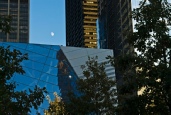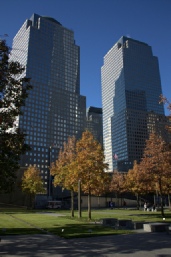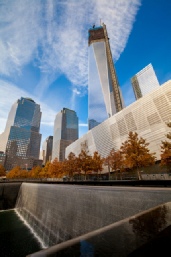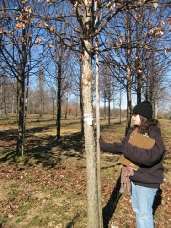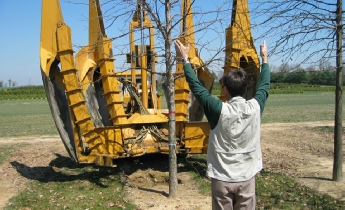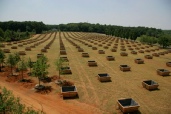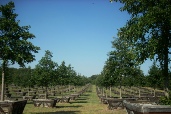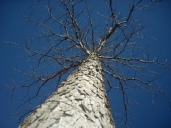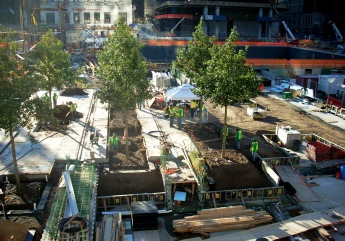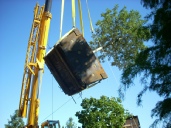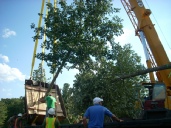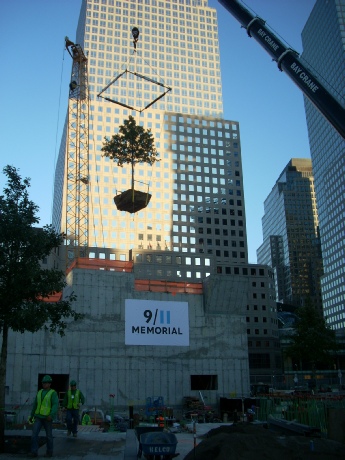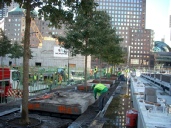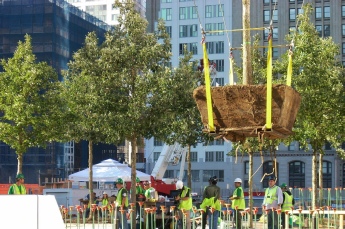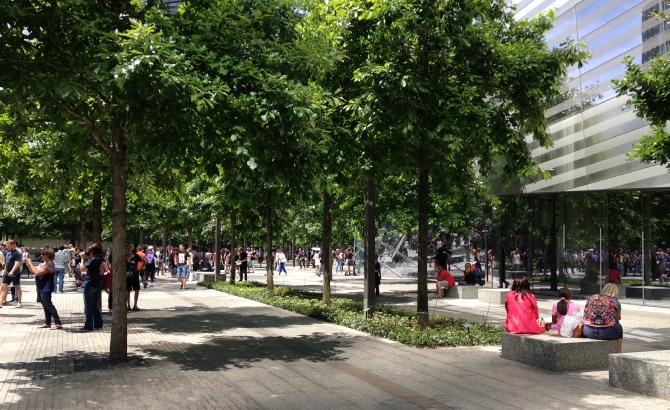national 9/11 memorial
>
>
Reflecting Absence
As part of the effort to create a memorial to the victims of 9/11, PC+A was retained
in 2005 by PWP Landscape Architecture of Berkeley, California to assist in developing
and implementing tree-
The art that architect Michael Arad and landscape architect Peter Walker crafted
on an 8-
At the same time, the design elegantly resolved several contrasting, and seemingly
incompatible objectives: The Memorial had to be powerful and evoke emotion, yet be
comforting and soothing. It had to memorialize the devastating loss, while celebrating
rebirth and life. It had to be a place where family members, local residents and
the world would be drawn to mourn, while serving as a high-
Key to Arad and Walker's solution was surrounding the massive pools with a modern, simple and understated park consisting of an apparently endless flat plane and a limited number of landscape elements that each contribute meaningfully to the design objectives, but without drawing attention to themselves.
The Memorial Trees
Originally imagined as a stark, open plaza, PWP's addition of a forest of 420 oak trees helped humanize the Memorial with emerging new life, comforting scale, and moderation of intense sun, wind and city noise, along with several subtle artistic plays.
The mandate that these 420 trees contribute meaningfully without drawing attention
to themselves demanded a single-
Oak was the obvious choice, given its stature, longevity and symbolic strength. After
vetting many potentially suitable species, PC+A presented a shortlist of recommendations
and the designers settled on swamp white oak (Quercus bicolor). In addition to meeting
the design objectives, swamp white oak is widely considered to be less prone to serious
insect and disease problems in monoculture than many other species and is strong-
Working with PWP and Environmental Design, PC+A field evaluated and graded thousands of trees at dozens of nurseries and in natural stands in five states against an exacting specification before making final selection of the exceptional quality trees that would grace the Memorial.
Tree Procurement & Preparation
The World Trade Center redevelopment has frequently been described as one of the
most complicated construction sites in the world. With numerous fast-
To accomplish this, PC+A and PWP developed an elaborate, non-
All trees were dug with oversized root balls and planted into large boxes set up in a temporary nursery in New Jersey. Here, they were primped and preened for four years with the objectives of optimizing structural and aesthetic form, maximizing health and vigor, and matching crown height and silhouette. Several strategies were employed to manipulate the growth rate of individual trees to improve consistency in their size.
In this manner, all trees had fully recovered from transplanting before they were
moved to the Memorial, they were acclimated to local conditions, seasonal restrictions
on planting were eliminated, and well-
Complex Simplicity
The Memorial is so simple in its powerful statement, yet incredibly complex in its implementation.
As an 8-
PC+A's tasks included contributing to PWP's design of an elaborate sub-
To help meet the requirements for LEED Gold certification from the U.S. Green Building
Council, trees were harvested from within a 500-
For a detailed animation of the tree support systems, please see the New York Times.
Tree Planting
After rigorous ongoing review by PC+A for health and vigor and by PWP Landscape Architecture for aesthetic form, trees were culled and delivery of the best to the Memorial site began in August, 2010.
Once procedures for loading, transport and planting at the Memorial site were established, subsequent planting and maintenance continued in the capable hands of Environmental Design and Bartlett Tree Experts.
The Memorial opened on September 11, 2011 with approximately half of 437 trees planted. Over 8 million people from around the world have visited in less than two years since.
The remaining trees will be planted in phases as construction at the World Trade Center complex progresses and designated tree planting sites become available.
For more about the National 9/11 Memorial and the landscape team, Please visit:
NATIONAL 9/11 MEMORIAL
new york, new york
Owner: Port Authority of NY and NJ | Client: National September 11 Memorial & Museum
Design Architect: Michael Arad | Landscape Architect: PWP Landscape Architecture
Tree Planting: Environmental Design | Tree Maintenance: Bartlett Tree Experts



